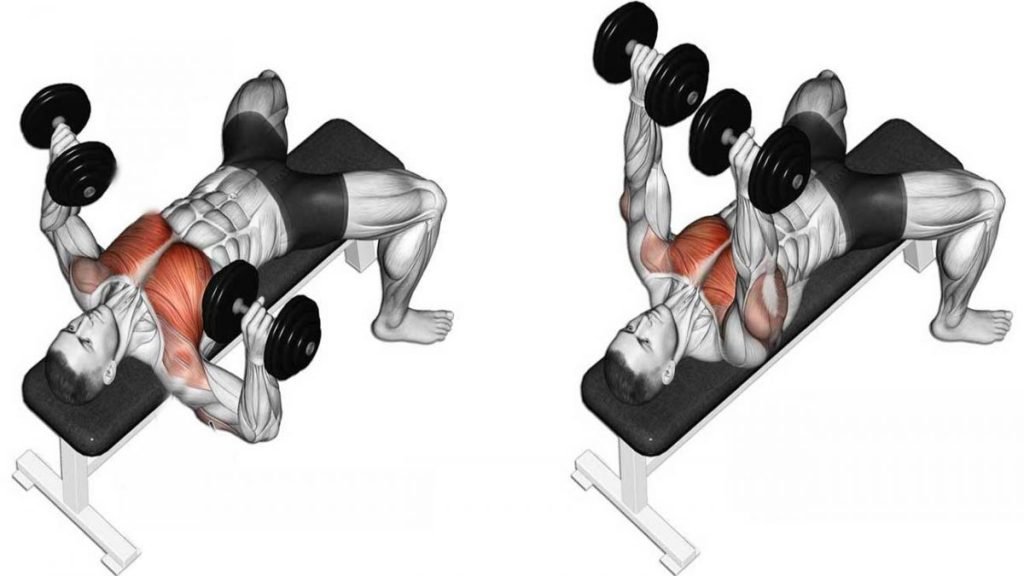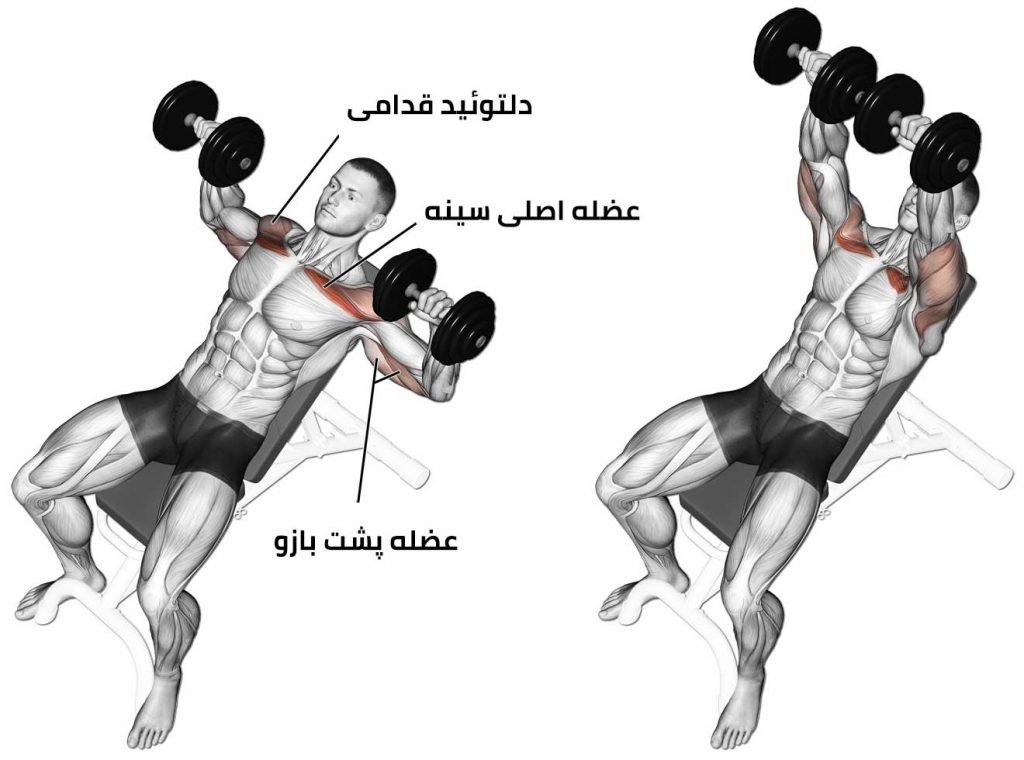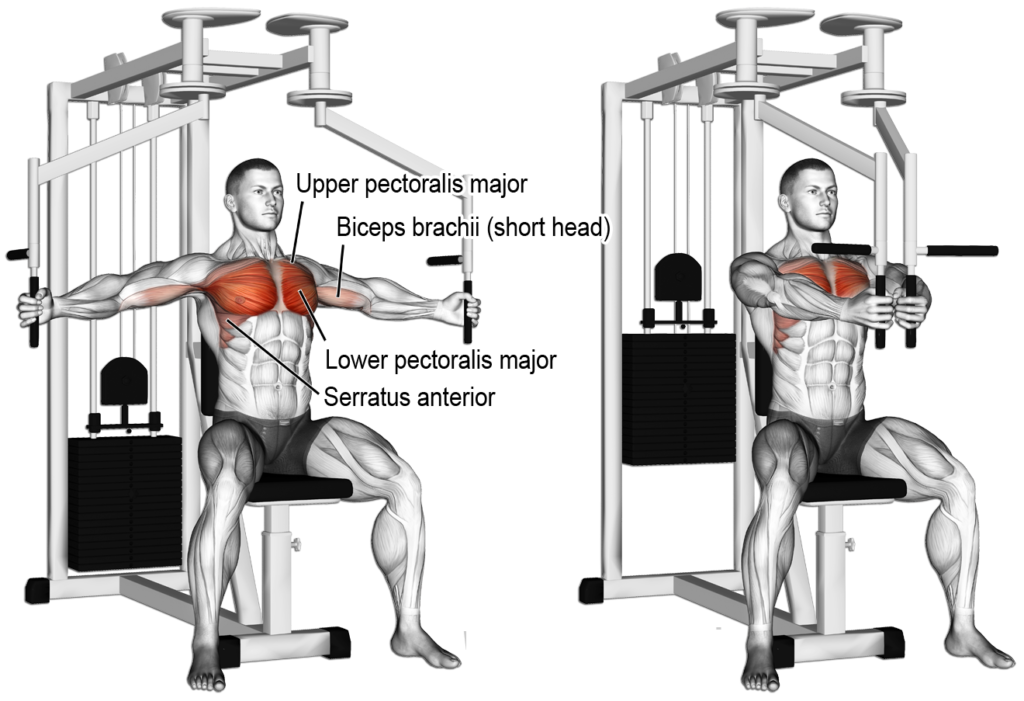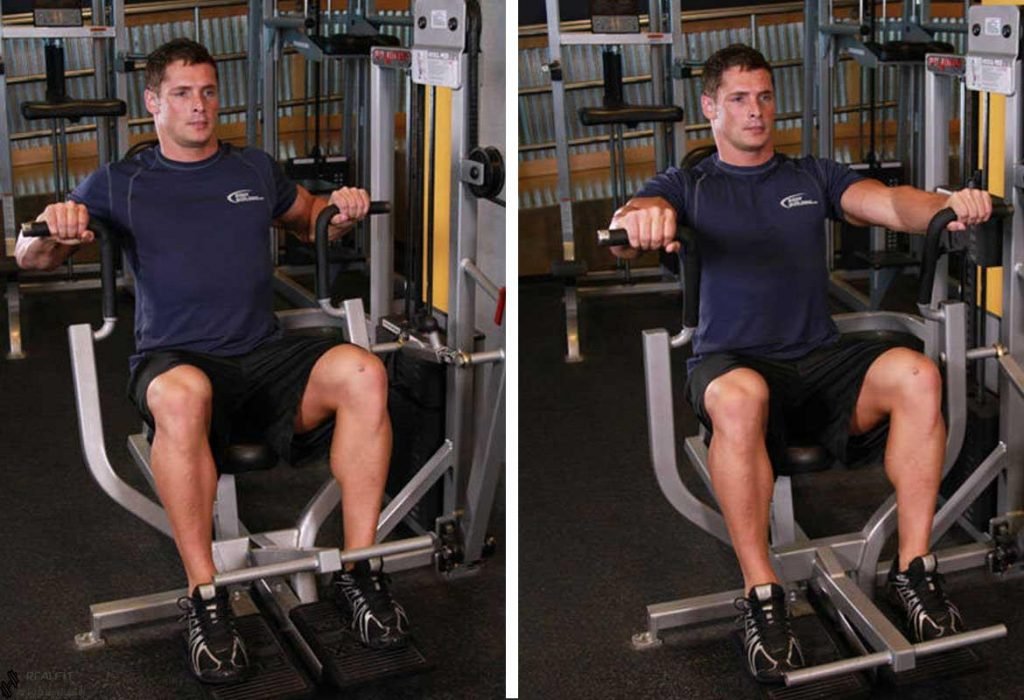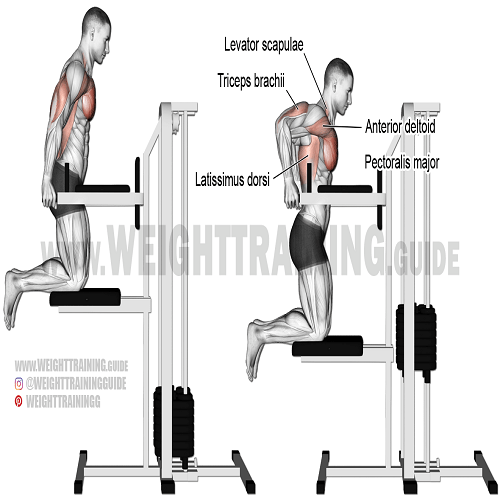How to have large and well-shaped chest muscles + 12 exercises
The pectoral muscles are divided into small and large parts, which cover the entire chest space.
There are so many movements for the pectoral muscles that it is better to familiarize yourself with the best movements for the pectoral muscles to know which movements have the best effect on increasing your volume.
Chest muscles need a lot of exercises and it is necessary to do it with a range of chest movements that engage the target muscles to get the best results.
Simple and beginner exercises to strengthen chest muscles
If you have not done any exercise in this regard before, you can start with the following exercise. You should do this movement 3 times a day. By strengthening the muscles, you can increase the number of times and duration.
Swimming on the knees
To start this movement, place the palms on the floor parallel to the shoulders so that only the knees are in contact with the floor. Keep your back and neck straight and slowly bend your elbows until your chest is parallel to the floor. The weight of the upper body should be on the arms and there should not be much contact between the chest and the ground. Then slowly straighten the elbows to return to the starting position. Repeat this movement 3 times and each time for 10 times.
swimming motion
This movement is a more advanced form of the previous one (which was done by leaning on the knees). In picture number 3, you can see the start and end of the exercise. During this exercise, the back and neck should be straight. Slowly bend the elbow until the chest is parallel to the floor. Stay in this position for a few seconds and then straighten the elbows to return to the starting position. Repeat this movement 3 times and 10 times each time. Note that you should not feel unusual pain during this movement.
pull cord
You can do this movement standing or sitting on your knees. In this movement, the back should be straight and hold the strap with one hand and pull it towards the body (near the hip bone). Note that the back and elbows should not bend and should remain straight to put pressure on the pectoral muscles. Repeat this movement 3 times and 10 times for each hand.
Dumbbell pullover on a Swiss ball or table
For this exercise, you need a dumbbell (or any weight) and a Swiss ball (or table). Begin the exercise by lying on the table or ball and note that the back and neck should be straight and in the same line, also hold the weight or dumbbell with both hands so that the elbow is straight and along the body. Then bring the weight to the top of the head (in front of the face), hold for a few seconds and return to the starting position. If you do this exercise on the table, make sure that the table is soft and that the entire waist is on the table and the soles of the feet are on the floor.
Professional exercises
Dumbbell chest press
With dumbbells, each part of your chest should work independently, which requires more muscle stability. Dumbbells are more difficult to control than barbells. Dumbbells also allow you to move with a greater range of motion than a barbell. Do the dumbbell chest press at the beginning of the workout with heavy dumbbells and low repetitions.
Dumbbell chest up
Dumbbell chest press is usually one of the top 10 movements of every person in the choice of chest movements, but on an adjustable chest table, you can do things that cannot be done on a flat table. You can change from set to set in this movement. Change the inclination of the table or train with a different inclination in each training session. This will train the entire chest muscles in many ranges.
- At the start of the movement, sit on an incline bench and hold dumbbells at chest level with palms facing forward.
- Press the dumbbells up vertically until the elbows are locked.
- Lower the dumbbells to the upper part of the chest.
Muscles involved in the chest press movement with dumbbells:
The upper part of the pectoralis major muscle
Anterior deltoid triceps brachii
Barbell chest press
You can get the most power from this movement because in the chest press movement you can use the most weights possible. Also, it is much easier to control it than the dumbbell chest press in heavy weights.
- While lying on a flat bench, hold the barbell overhead with your hands slightly wider than shoulder width apart.
- Lower the weight slowly until it touches the middle part of the chest.
- Press the barbell straight up until the elbows are straight.
Muscles involved in barbell chest press movement:
big breast
Anterior deltoid, triceps brachii
Barbell chest up
In this movement, it is usually seen that the inclination of the table is considered too much, and in this case, instead of the pressure being placed on the upper chest muscles, it is usually placed on the front shoulder. Put the standard so that the pressure is removed from the shoulder muscles as much as possible. You can also do this movement with a low incline in the Smith machine.
Seated chest press
Chest exercises with free weights on a flat table are excellent, but the seated machine chest press also has its own advantages. For example, in this movement, you can easily do your repetitions in a slow and controlled manner. Machines that can accommodate large weights. This allows you to do your drop sets as quickly as possible.
Chest press under the machine
Some pectoral equipment, such as the hammer press, are designed in such a way that each part of the pectoral muscles is trained independently, which is an interesting and very good feature for chest exercises. In addition to training with this device, you can usually go to one side. If you want to train only one part of your chest muscles with one hand, this type of training will make you face a completely new training environment.
- A wire chest on a sloping table
There are not many single-joint movements that can introduce themselves as the best movements, but this movement is an exception. This movement can be a very effective movement after completing multi-joint movements. By using the cable device, pressure is maintained on the chest muscles throughout the exercise. And the range of motion is completely preserved.
Parallel chest dip
- Grab the parallel bars and go up so that your body weight is on your hands. In this case, the elbows are straight.
- Bend the elbows and lower the upper body until the arms are parallel to the ground.
- Move the upper body up with pressure until the elbows are straight.
Muscles involved in deep parallel chest movement
The lower part of the pectoralis major muscle
Triceps, anterior deltoid
Can we do the mentioned exercises in the gym?
The chest exercises that are taught in this how-to are divided into two sections, beginner and professional, where you can do professional chest exercises in the gym with chest presses, dumbbells, etc.
Do we have to use the device to perform breast movements?
You can bulk up and strengthen your chest muscles with the exercises given in this tutorial without using strapping devices.





